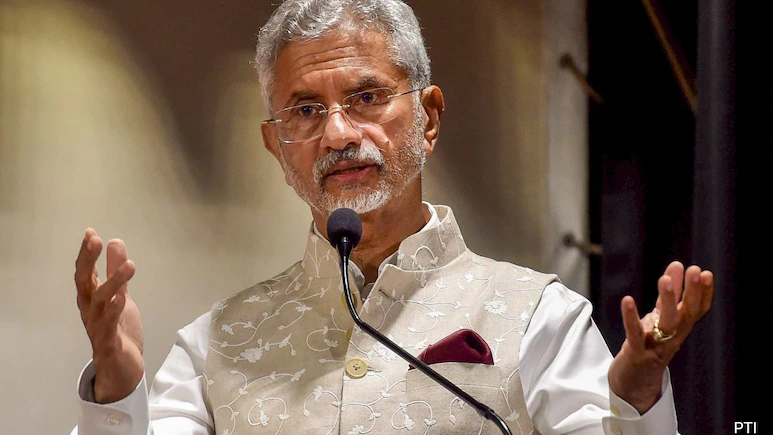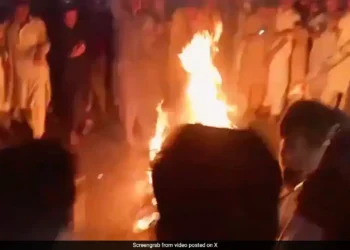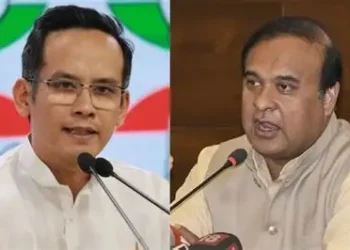In a major diplomatic breakthrough, the DGMOs of India and Pakistan agreed to halt all hostilities by 5 PM IST, marking a pause in one of the region’s most dangerous standoffs in years.
BY PC Bureau
India has confirmed a ceasefire agreement with Pakistan, hours after U.S. President Donald Trump claimed credit for brokering a “full and immediate” truce between the two nuclear-armed neighbors. The announcement follows weeks of heightened tensions and deadly military exchanges triggered by a terrorist attack in Jammu and Kashmir that claimed 26 lives.
India External Affairs Minister S Jaishankar confirmed the ceasefire through a post on X: “India and Pakistan have today worked out an understanding on stoppage of firing and military action,” he said..
Foreign Secretary Vikram Misri confirmed on Saturday evening that Pakistan’s Director General of Military Operations (DGMO) called his Indian counterpart at 15:35 IST, and the two sides agreed to “stop all firing and military action on land, in the air, and at sea” from 17:00 IST onwards.
“Today, instructions have been given on both sides to give effect to this understanding,” Misri stated. “The Directors General of Military Operations will speak again on the 12th of May at 1200 hours.”
No talks beyond ceasefire agreed: Government sources clarified that there is no decision to initiate dialogue on any other issue at any venue beyond the DGMO channel.
India and Pakistan have today worked out an understanding on stoppage of firing and military action.
India has consistently maintained a firm and uncompromising stance against terrorism in all its forms and manifestations. It will continue to do so.
— Dr. S. Jaishankar (@DrSJaishankar) May 10, 2025
Escalation and Retaliation: A Timeline
The ceasefire follows one of the most serious military escalations between the two nuclear-armed neighbors in recent decades. The conflict was sparked by a terrorist attack on April 22 in Pahalgam, Indian-administered Kashmir, which killed 26 civilians, mostly tourists. India blamed Pakistan for orchestrating the attack—a claim Islamabad strongly denied.
In retaliation, India launched Operation Sindoor on May 7, targeting nine alleged terrorist sites across Pakistan and Pakistan-administered Kashmir. Pakistan responded with drone and missile strikes on Indian military targets, spanning from Leh to Sir Creek.
India’s Ministry of External Affairs reported 13 civilian deaths and 59 injuries from Pakistani shelling along the Line of Control (LoC), particularly in the Poonch region. Pakistan, in turn, claimed 36 deaths and 57 injuries from Indian airstrikes.
JUST IN: Foreign Secretary Vikram Misri – India, Pakistan have agreed to a ceasefire
FULL: https://t.co/0fB1lcpobr pic.twitter.com/JZQD31ewmt
— The Darjeeling Chronicle (@TheDarjChron) May 10, 2025
Trump’s Announcement and U.S. Mediation
President Trump took to social media to declare the ceasefire:
“After a long night of talks mediated by the United States, I am pleased to announce that India and Pakistan have agreed to a FULL AND IMMEDIATE CEASEFIRE.”
Though New Delhi and Islamabad have yet to comment directly on Trump’s post, both sides have begun withdrawing forces and halting operations, signaling de-escalation.
The U.S. diplomatic push was spearheaded by Secretary of State Marco Rubio, who engaged with Pakistan’s Army Chief General Asim Munir and Indian External Affairs Minister S. Jaishankar. The sudden shift in U.S. policy—from Vice President J.D. Vance’s earlier non-interventionist stance—reflects the mounting pressure to prevent nuclear escalation and maintain regional stability.
Global Reactions and Speculations
International reaction has been cautiously optimistic. Iran and Gulf countries have welcomed the ceasefire, offering to mediate further, while Belarus reiterated its call for sustained peace efforts.
Online, the response has been mixed. While some users praised the development, others speculated—without evidence—that secret negotiations may involve restoring the Indus Waters Treaty or discussions on Kashmir’s status, both denied by Indian officials.
Fragile Truce, Unresolved Issues
Despite the breakthrough, analysts warn the truce remains fragile. The root causes—Kashmir, terrorism, and border violations—remain unaddressed. The situation has been further complicated by Pakistan’s suspension of the 1972 Simla Agreement in April 2025, reverting the LoC to a contested ceasefire line instead of a de facto border.
“This ceasefire is a bandage on a deep wound,” said Praveen Donthi of the International Crisis Group. “Without a roadmap for dialogue, another flare-up is inevitable.”
Relief on the Ground
For civilians in conflict-hit areas like Poonch, Rajouri, and Uri, the ceasefire offers immediate relief after days of blackouts, evacuations, and shelling. However, India remains wary.
Foreign Secretary Misri warned, “Pakistan’s continued provocations, including drone attacks, will be seen as escalatory acts and will receive a very firm response.”
As both sides step back from the brink, global stakeholders—led by the U.S. and backed by regional actors—must now capitalize on this pause to push for long-term peace and deconfliction mechanisms. Given the nuclear stakes, the window for lasting resolution has never been more urge













